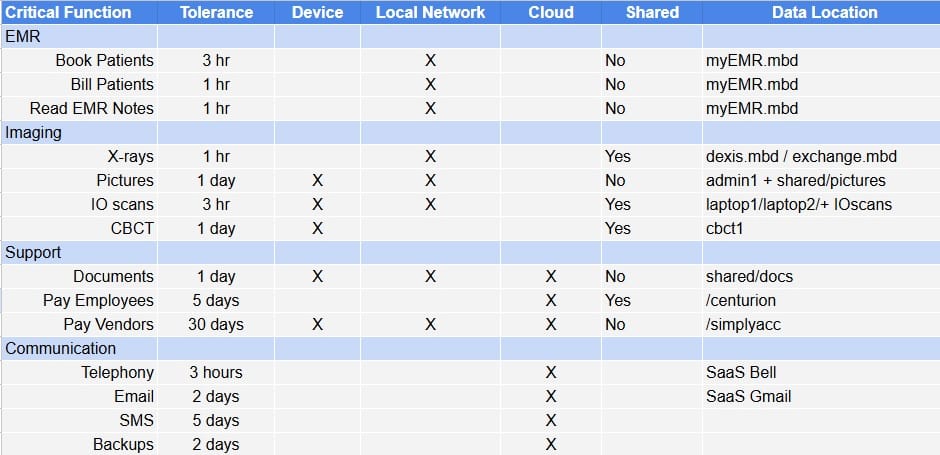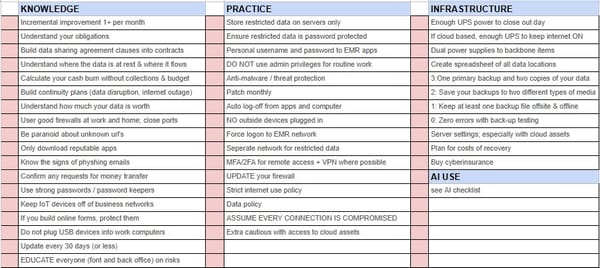Building Digital Resilience in Your Professional Practice: A Quick Guide to Managing Key Functions and Data Storage

Running a professional practice means juggling a lot of important functions: booking and billing, managing EMRs (Electronic Medical Records), handling imaging, keeping track of support documents, and staying in touch with clients. But what happens if any of these systems go down? Are you ready for a hiccup in your day-to-day flow?
Here’s a simple framework to help you assess your critical functions and set up solid plans for data storage, downtime tolerance, and digital backups.
1. Pinpoint Your Key Functions and How Long You Can Handle Downtime
Start by listing out your most crucial functions and asking yourself how long each one could be down before it starts to cause issues. For example:
- Booking Clients: Is a 3-hour delay okay, or would that be a big issue?
- Billing Clients: Could you afford a 1-hour downtime, or would that mess with your cash flow?
- Accessing EMR Notes: How critical is having constant access to records?
Knowing your tolerance helps you decide where to focus your efforts when setting up backups and redundancies.
2. Know Where Your Data Lives and Avoid Storing It on Vulnerable Devices
Now, figure out where the data for each function is actually stored. Some common storage locations include:
- Local Network or Cloud: Having files on a secure network or in the cloud makes them accessible and more protected.
- Shared Folders: These work well but need organized backups to avoid losing data.
- End-of-Chain (EOC) Devices: Avoid storing essential data on individual devices like laptops, which are more vulnerable to loss or failure.
Keeping important data off EOC devices can save you from headaches if a device gets damaged, lost, or fails.
3. Set Up Digital Redundancies and Regular Backups
Protect yourself from data loss with the “3-2-1” backup rule: keep three copies of data, on two different types of storage, with one copy kept offsite. Here’s what that could look like:
- On-Site & Cloud Syncing: Store data both locally and in the cloud so you can access it even if one system has an issue.
- Shared Network & Folder Backups: Use shared folders with automatic backup routines to keep important files in more than one spot.
- Consistent Backup Schedule: Set daily or weekly backups for must-have functions like EMRs, client billing, and payroll.
4. Match Downtime Tolerance with Redundancy Efforts
Some systems, like email or text messaging, might handle a few hours or days of downtime without serious trouble. But others, like booking and client records, need fast recovery options. By ranking each system by its downtime tolerance, you can focus your backup strategies where they’re needed most.
Taking these steps will help you build a practice that’s resilient, reliable, and ready for any unexpected bumps along the way. Investing in backups and redundancy now can save you a lot of time and stress later on!




